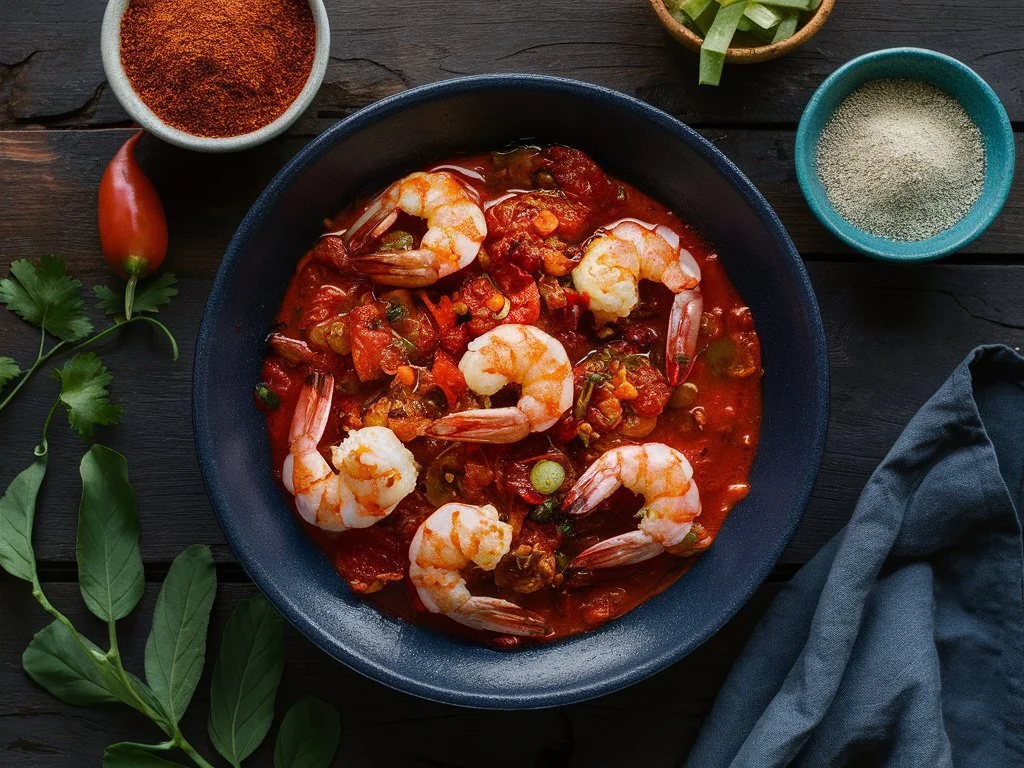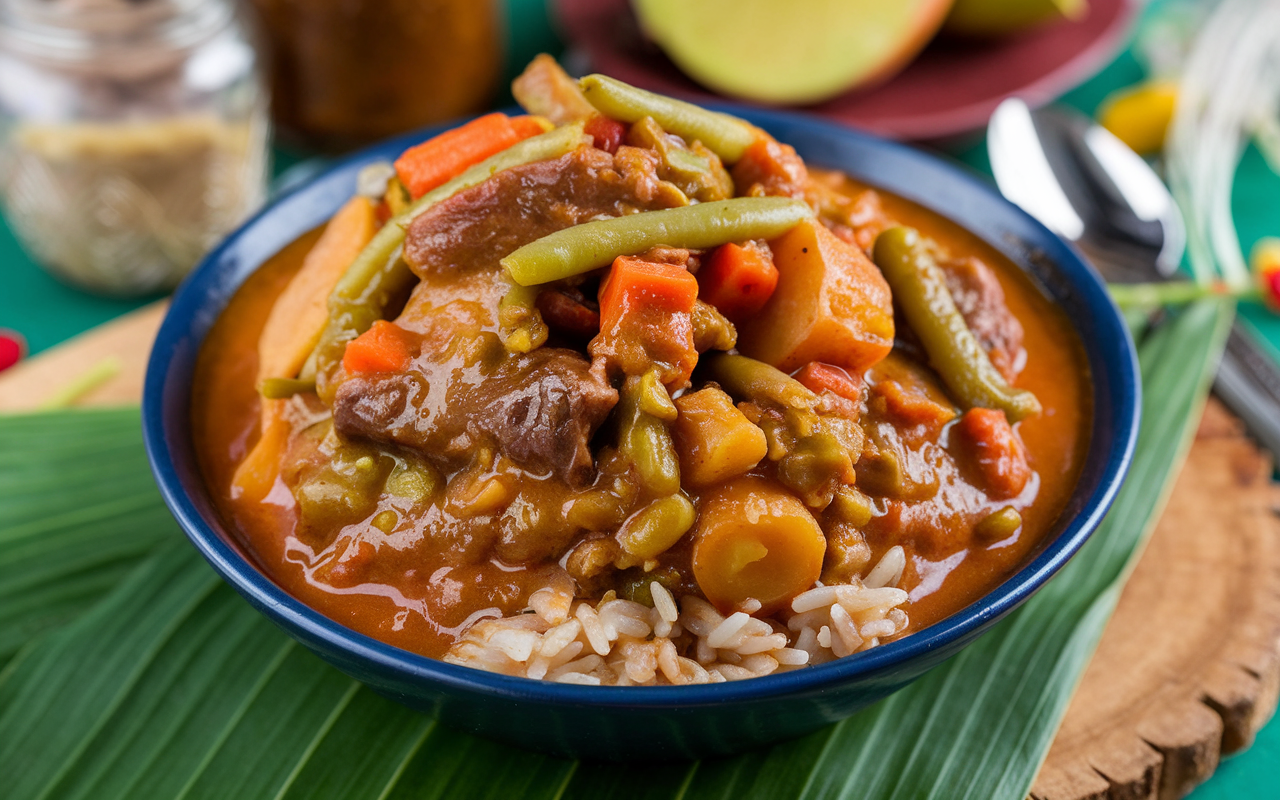Camarones a la Diabla, or “Deviled Shrimp,” is a classic Mexican dish that captures the essence of the country’s vibrant culinary traditions. This spicy, flavorful dish combines succulent shrimp with a fiery red sauce made from a blend of chilies, tomatoes, and spices. It’s a favorite among seafood lovers and those who appreciate bold, intense flavors. In this blog post, we’ll dive into the history, ingredients, preparation, and cultural significance of Camarones a la Diabla. We’ll also share tips for perfecting this dish at home and some creative variations to suit different tastes.
History of Camarones a la Diabla
The origins of Camarones a la Diabla are rooted in Mexico’s rich seafood tradition, particularly from the coastal regions where fresh shrimp are abundant. The dish’s name, “a la Diabla,” translates to “deviled” in English, reflecting its spicy nature. While the exact origins are hard to pinpoint, it is widely believed that this dish emerged from the coastal states such as Veracruz, Sinaloa, and Nayarit, where seafood is a staple.
Coastal Influence
Mexico’s coastline stretches over 9,000 kilometers, providing an extensive variety of seafood to its culinary repertoire. Coastal communities have developed unique dishes that highlight the freshness and flavors of the sea. Camarones a la Diabla is one such dish that showcases the perfect blend of land and sea, using local chilies and spices to enhance the natural sweetness of shrimp.
Influence of Spanish Cuisine
Spanish colonization had a significant impact on Mexican cuisine, introducing new ingredients and cooking techniques. The use of tomatoes, brought from the New World to Europe and then back to the Americas in various forms, is a key component of the sauce in Camarones a la Diabla. The fusion of indigenous Mexican flavors with Spanish culinary methods gave rise to many iconic dishes, including this fiery shrimp dish.
Popularity and Variations
Over time, Camarones a la Diabla has evolved and spread throughout Mexico and beyond, with each region adding its own twist. The dish has become a staple in Mexican restaurants worldwide, often featured as a highlight for those seeking an authentic and spicy dining experience. Its versatility allows for numerous variations, adapting to local ingredients and preferences while maintaining its distinctive spicy profile.
Ingredients
Creating the perfect Camarones a la Diabla starts with selecting the right ingredients. Here’s a breakdown of the key components that make this dish so special.
Shrimp
The star of the dish, shrimp should be fresh, plump, and deveined. Large or jumbo shrimp are ideal for this recipe as they offer a satisfying bite and hold up well to the robust sauce.
Chilies
The heat and depth of flavor in Camarones a la Diabla come from a mix of chilies. Commonly used chilies include:
- Chile de Árbol: Known for its intense heat and slightly nutty flavor.
- Guajillo Chilies: These dried chilies add a mild heat and sweet, tangy notes.
- Chipotle Chilies: Providing a smoky flavor that complements the other chilies.
Tomatoes
Fresh or canned tomatoes are used to create the base of the sauce. They add a rich, tangy flavor that balances the heat of the chilies.
Garlic and Onions
These aromatics are essential for building the flavor foundation of the sauce. Garlic adds a pungent kick, while onions contribute sweetness and depth.
Spices
Cumin, oregano, and bay leaves are commonly used to enhance the complexity of the sauce. These spices bring earthy and herbal notes that round out the dish.
Additional Ingredients
Olive Oil: Used for sautéing the aromatics and shrimp.
Lime Juice: Adds a bright, citrusy finish.
Salt and Pepper: Essential for seasoning and balancing flavors.
Step-by-Step Preparation
Preparing the Chilies
Begin by toasting the dried chilies in a hot skillet until they become fragrant, being careful not to burn them. Toasting helps to release their oils and deepen their flavor. Once toasted, remove the chilies from the skillet and let them cool slightly. Then, remove the stems and seeds before soaking the chilies in hot water for about 20 minutes to soften them.
Making the Sauce
In a blender, combine the softened chilies, tomatoes, garlic, and onions. Blend until you achieve a smooth consistency. For a richer flavor, you can sauté the garlic and onions before blending. Heat a tablespoon of olive oil in a large skillet over medium heat, then pour in the blended sauce. Add cumin, oregano, and bay leaves. Let the sauce simmer for about 15-20 minutes, allowing the flavors to meld together. Season with salt and pepper to taste.
Cooking the Shrimp
While the sauce is simmering, prepare the shrimp. In a separate skillet, heat some olive oil over medium-high heat. Add the shrimp and cook until they turn pink and opaque, about 2-3 minutes per side. Be careful not to overcook the shrimp, as they can become tough and rubbery.
Combining Shrimp and Sauce
Once the shrimp are cooked, add them to the skillet with the sauce. Stir to ensure the shrimp are fully coated in the spicy mixture. Let everything simmer together for an additional 5 minutes, allowing the shrimp to absorb the flavors of the sauce.
Serving
Camarones a la Diabla is best served hot, garnished with fresh cilantro and a squeeze of lime juice. It pairs wonderfully with rice, tortillas, or crusty bread to soak up the delicious sauce. For a complete meal, consider serving it alongside a fresh salad or roasted vegetables.
Also Read: Anix.to: Revolutionizing UI/UX Design
Tips for Perfecting Camarones a la Diabla
Choose Fresh Ingredients
The quality of your ingredients significantly impacts the final dish. Use fresh shrimp and ripe tomatoes to ensure the best flavor.
Balance the Heat
Adjust the amount of chilies to suit your heat tolerance. If you prefer a milder dish, use fewer chile de árbol and more guajillo or chipotle chilies.
Don’t Rush the Sauce
Letting the sauce simmer allows the flavors to develop fully. Be patient and give it the time it needs to achieve a rich, complex taste.
Avoid Overcooking Shrimp
Shrimp cook quickly, so keep a close eye on them to avoid overcooking. They should be pink and firm but not rubbery.
Experiment with Aromatics
Feel free to experiment with additional aromatics like bell peppers, carrots, or celery to add more depth and texture to the sauce.
Creative Variations
Camarones a la Diabla Tacos
Transform the dish into delicious tacos by serving the shrimp and sauce in warm tortillas. Top with avocado slices, shredded cabbage, and a drizzle of crema for a satisfying meal.
Diabla Pasta
Combine the spicy shrimp with pasta for a fusion twist. Toss cooked pasta with the sauce and shrimp, adding a bit of pasta water to achieve the desired consistency. Garnish with fresh parsley and grated Parmesan cheese.
Grilled Camarones a la Diabla
For a smoky flavor, grill the shrimp instead of sautéing them. Marinate the shrimp in the sauce for at least 30 minutes before grilling, then cook over medium-high heat until charred and cooked through.
Camarones a la Diabla Salad
Create a light and refreshing salad by serving the shrimp and sauce over a bed of mixed greens. Add cherry tomatoes, sliced radishes, and avocado for a vibrant and healthy option.
Vegetarian “a la Diabla”
For a vegetarian version, replace shrimp with hearty vegetables like mushrooms, zucchini, or cauliflower. The spicy sauce pairs well with a variety of veggies, making it a versatile option for different dietary preferences.
Conclusion
Camarones a la Diabla is a testament to the bold and vibrant flavors that define Mexican cuisine. This dish, with its succulent shrimp and fiery sauce, is perfect for those who enjoy a spicy culinary adventure. By understanding the history, selecting quality ingredients, and following the steps to prepare it, you can bring this authentic Mexican delight to your table. Whether you stick to the traditional recipe or experiment with creative variations, Camarones a la Diabla is sure to impress and satisfy. So, gather your ingredients, embrace the heat, and savor the delicious complexity of this classic dish.




